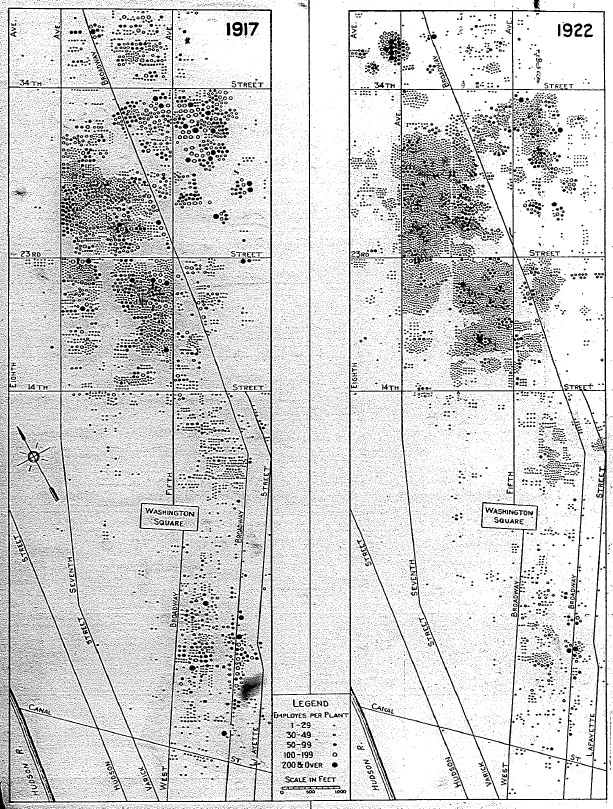New immigrant labor fuels the boom on Greene Street.
Ellis Island, 1892. Corbis, found on New York Times
The red (B) areas are Russian Jews, and the brown (C) areas are Italian. This “Ethnic Map” was commissioned by the Joint Legislative Committee Investigating Seditious Activities, and later used by State Senator Clayton Lusk to track suspected radicals.
Ethnic Map, 1919. New York State Archives. Found at New York Times.
Greene Street

Triangle Shirtwaist Factory workers, from HBO's Triangle: Remembering the Fire, 2011.
Building interior after the Triangle Factory fire, 1911. From "Today's Document," blog of the National Archives.
Clips from PBS American Experience Season 23 Episode 8: Triangle Fire, 2011.
Demonstration after the Triangle Factory fire, 1911. From "Today's Document," blog of the National Archives.
From B.M. Selekman, Henriette R Walter, W.J. Couper. “The Clothing and Textile Industries.” In Regional Survey of New York and Its Environs, Volume IB: Food, Clothing and Textile Industries Wholesale Markets and Retail Shopping and Financial Districts, edited by R.M. Haig and R.C. McCrea. New York: Regional Plan of New York and Its Environs, 1928."
Greene Street
Greene Street
Greene Street
Greene Street


Fernbach, Henry. "120 Greene," 1950s, from Winston Weisman Collection of Architectural Photographs, New-York Historical Society.
Boom and bust: industry abandoned Greene Street.